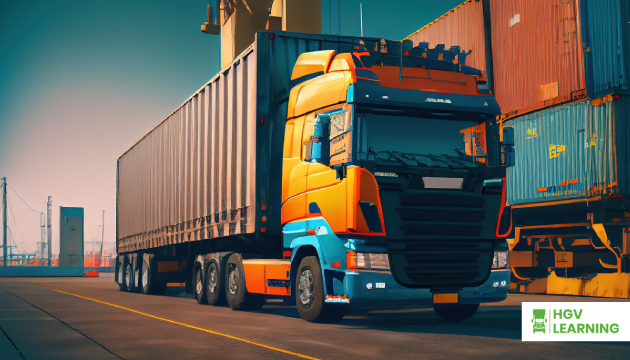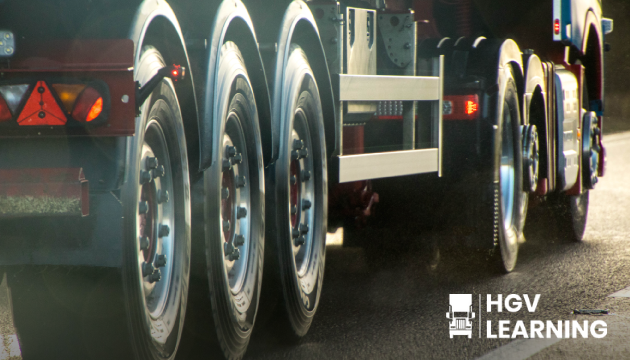Related Articles

28/10/2025
Preventing HGV Overloading: Legal Limits and On-the-Road Consequences

21/10/2025

If you’re considering taking a C1 driving course, you might be wondering what’s involved, how long it takes, and whether it’s the right step for you. Whether you’re looking to drive an ambulance, a large delivery vehicle, a motorhome, or a horsebox, a C1 licence is essential for operating vehicles between 3.5 and 7.5 tonnes.
In this article, we’ll cover everything you need to know about a C1 driving course, including:
By the end of this guide, you’ll have a complete understanding of how to get your C1 licence, what to expect from the training, and how to get started with HGV Learning.
A C1 driving course is a specialist training programme designed to qualify drivers to operate vehicles weighing between 3.5 and 7.5 tonnes. This course is essential for anyone who needs to drive larger vehicles for work or personal use, including paramedics, delivery drivers, motorhome owners, and horsebox drivers.
If you currently hold a Category B licence (which allows you to drive cars and vans up to 3.5 tonnes), you will need to complete a C1 driving course to legally operate heavier vehicles. Without a C1 licence, you would be restricted to smaller vans and cars, making this qualification a crucial step for many professionals and private vehicle owners.
Larger vehicles require specialist handling skills that go beyond what is taught in standard driving lessons. A C1 driving course ensures that drivers are:
A C1 licence is a legal requirement for anyone driving vehicles between 3.5 and 7.5 tonnes, including many ambulances, lorries, and specialist transport vehicles. If you are planning to work in logistics, healthcare, or transport, completing a C1 driving course is essential to qualify for these roles.
A C1 driving course provides both theoretical and practical training, ensuring drivers understand how to safely operate and control larger vehicles. The course typically includes:
Once you pass your C1 driving test, you will receive a full C1 licence, allowing you to drive vehicles between 3.5 and 7.5 tonnes legally and confidently.
A C1 driving course is essential for:
If you fall into any of these categories, completing a C1 driving course is a necessary step to ensure you are legally qualified to drive your vehicle.
At HGV Learning, we provide expert training and support to help you pass your C1 driving test quickly and confidently. Our courses include:
A C1 licence opens up career opportunities and allows for greater driving flexibility. Whether you need it for work or personal travel, HGV Learning can help you achieve your qualification with ease. Contact us today to get started with your C1 driving course.
A C1 licence is required for a wide range of professional and personal driving needs, making it an essential qualification for many industries and private vehicle owners. If you plan to drive a vehicle weighing between 3.5 and 7.5 tonnes, you must complete a C1 driving course to legally operate it on UK roads.
Below are the key groups of people who must obtain a C1 licence:
One of the most common reasons for needing a C1 licence is to drive an NHS ambulance or private emergency response vehicle. Most ambulances weigh between 4 and 5.5 tonnes, which exceeds the 3.5-tonne limit allowed on a standard Category B (car) licence.
If you are pursuing a career as a paramedic or emergency medical technician (EMT), a C1 licence is an essential requirement. Many NHS ambulance trusts and private medical transport providers will require you to obtain this qualification before applying for a role. By completing a C1 driving course, you will gain the necessary skills and legal approval to operate an ambulance safely and effectively in high-pressure situations.
Many delivery companies, freight transport businesses, and logistics providers use vehicles that exceed 3.5 tonnes. If you are planning to work as a:
…then obtaining a C1 licence will be essential for securing these job roles. Many businesses operate fleet vehicles in the 3.5 to 7.5-tonne range, and employers often look for qualified C1 drivers with professional training and road experience.
If you own or regularly transport horses and livestock, you may need a C1 licence to operate a horsebox or livestock transporter. Many horseboxes exceed the 3.5-tonne limit, especially when fully loaded with horses, feed, and equipment.
For anyone involved in equestrian activities—whether for competition, breeding, or recreational riding—having a C1 licence ensures that you can legally and safely transport animals across the UK and beyond. The ability to drive your own horsebox provides greater flexibility and independence, as you won’t have to rely on hiring professional transport services.
If you’re a travel enthusiast who owns or is considering purchasing a motorhome or campervan, a C1 licence may be required. Many modern motorhomes, RVs, and converted vans exceed the 3.5-tonne weight limit, especially when fitted with additional features such as kitchens, beds, and storage space.
If your motorhome weighs between 3.5 and 7.5 tonnes, you will need a C1 licence to drive it legally. Having this qualification also gives you the ability to upgrade to a larger vehicle in the future, providing greater freedom to travel in comfort.
The media and entertainment industry frequently requires C1-qualified drivers to operate production vans, mobile studios, and technical equipment vehicles. If you work in TV, film, or event production, a C1 licence may be necessary to transport heavy lighting, camera rigs, and sound equipment to various locations.
Many companies look for drivers with specialist training who can safely maneuver larger vehicles through busy urban areas and narrow rural roads. By obtaining a C1 licence, you can expand your career opportunities in this industry.
Many professionals in the construction, plumbing, and electrical trades use larger work vans to transport tools, materials, and equipment to job sites. Builders, roofers, scaffolders, and engineers may require a C1 licence to legally operate heavy-duty vans or small trucks used for commercial projects.
If you work in construction, obtaining a C1 licence can increase your employability and allow you to take on more varied and high-paying contracts. Some companies even offer funding or reimbursement for drivers who complete a C1 driving course as part of their employment package.
Even if you don’t require a C1 licence for work, you may need one for personal reasons. Many individuals purchase vintage fire engines, American-style pick-up trucks, or large custom-built vehicles for private use. If your vehicle falls between 3.5 and 7.5 tonnes, a C1 licence is legally required to drive it.
If you plan to drive any of the vehicles mentioned above, obtaining a C1 licence is a crucial step. At HGV Learning, we provide:
Completing a C1 driving course will open up career opportunities, improve driving skills, and ensure legal compliance. If you need a C1 licence, contact HGV Learning today and take the first step toward gaining your qualification.
Once you have completed your C1 driving course, you will be legally qualified to drive:
A C1 licence provides versatility and career flexibility, allowing you to work in multiple industries or enjoy personal travel with larger vehicles.
Obtaining a C1 licence involves several key steps. Here’s how you can get started:
You must pass a multiple-choice and hazard perception test covering road safety, vehicle operation, and hazard awareness.
Once you pass your C1 driving test, you will receive your full C1 licence, allowing you to legally drive vehicles up to 7.5 tonnes.
The time required to complete a C1 driving course depends on your prior experience and learning speed. On average:
Most learners complete their C1 licence training within a few weeks, making it one of the fastest routes to career advancement or vehicle upgrade.
At HGV Learning, we provide:
With years of experience in professional driver training, HGV Learning is the best choice for obtaining your C1 licence quickly and efficiently.
Here’s a summary of everything we’ve covered:
If you’re ready to take the next step, HGV Learning is here to help. Contact us today to book your C1 driving course and start your journey towards a new qualification and career opportunities.

28/10/2025

21/10/2025
Complete the form below and we’ll contact you asap.

